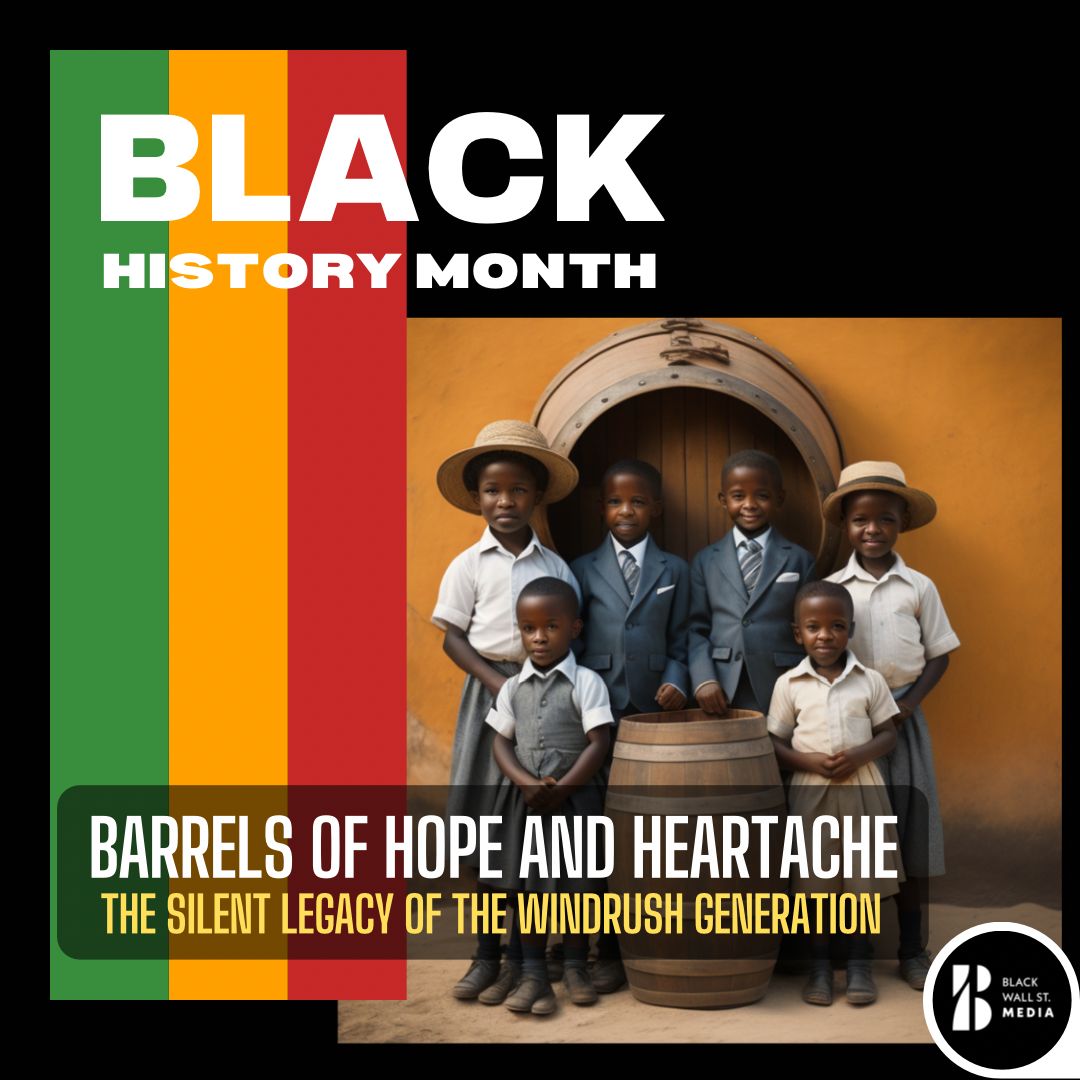HISTORY
Barrels of Hope and Heartache: The Silent Legacy of the Windrush Generation
“In the shadows of history, the tales of the Barrel Children echo resilience and yearning, reminding us that every chapter of the Windrush story is woven with threads of sacrifice, hope, and indomitable spirit.”
Black Wall St. MediaContributor

In the aftermath of World War II, Britain lay in ruins and sent out a profound call across the seas to the Caribbean.
Thousands from these sun-kissed islands, answering the call of the motherland, embarked on a journey that would indelibly shape their future and that of subsequent generations.
They were the Windrush Generation, hailed as pioneers of a transformative era. Their tales have been celebrated with great reverence, yet a pivotal narrative remains overshadowed—the story of the Barrel Children, the offspring left behind.
In the wake of 1945, as Britain began its healing process, the urgent plea for Caribbean migrants resonated strongly.
These individuals soon became integral to sectors like manufacturing, public transport, and healthcare.
The narratives of the Windrush Generation, tales of perseverance and sacrifice, have been inscribed in the annals of history. Yet, the accounts of the children left in their wake, the Barrel Children, remain less acknowledged.
The term “Barrel Children,” coined by Jamaican academic Dr Claudette Crawford, encapsulates the experiences of those who grew up with distant memories of their parents.
Often under the guardianship of grandparents or other extended family, their primary link to their parents was the arrival of barrels—containers filled with goods but also imbued with parental love, hopes, and aspirations.
Parental migration wasn’t novel to the Caribbean but reached an unprecedented scale during the era of the Windrush Generation.
With an estimated 90,000 children left behind in the Caribbean during the 1940s and 1950s, many parents set forth with the belief that they would return, their fortunes enhanced by overseas opportunities.
In the Caribbean, children matured enveloped in the warmth of kin, with fading memories of parents who slowly became abstract figures.
The sporadic dispatch of care packages and remittances provided a tenuous emotional tether. However, as years progressed, the sentiment linked to these barrels evolved.
What was once a symbol of joy and anticipation gradually morphed into a poignant reminder of absence and longing. The emotional repercussions—encompassing feelings of abandonment, depression, and low self-esteem—became a shared ordeal for many Barrel Children.
This narrative transcends mere terminology. It delves deep into the legacy shouldered by these children, illuminating its enduring influence across generations.
By spotlighting this lesser-known chapter of the Windrush story, a richer, more nuanced understanding of the complex ties between Britain and the Caribbean emerges.
While the Barrel Children’s voices may have been sidelined in mainstream narratives, their resilience and unyielding spirit are emblematic of the broader Windrush tale, underscoring the tenacity and fortitude of those caught between worlds, identities, and sentiments.
Black Wall St. MediaContributor











